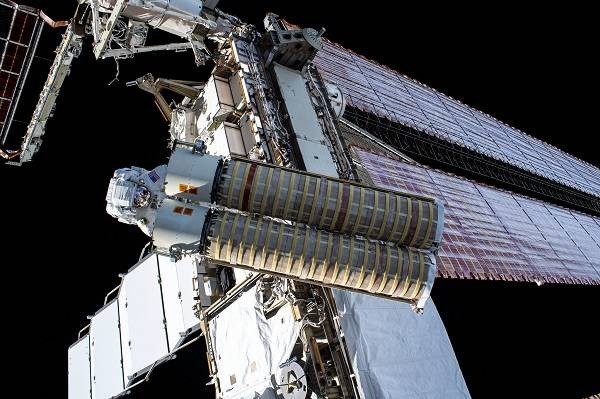
As they prepare to spend the holidays in space, astronauts aboard the International Space Station sent a Christmas message and some of their favorite photos to Earth.
NASA astronauts Kayla Barron, Raja Chari, Thomas Marshburn, Mark Vande Hei; ESA astronaut Matthias Maurer; and Roscosmos cosmonauts Pyotr Dubrov and Anton Shkaplerov are among the Expedition 66 crew members who will be enjoying Christmas onboard the orbiting lab this year. The cast sent out a special holiday greeting on Twitter per Space.com.
"I always look forward to this time of year because even when I was away at the naval academy, that was always the time that I got to come home to see my family," Barron said in the holiday video while wearing festive red, light-up reindeer antlers on the orbiting lab.
"We get to see the sun rise many times a day, so thinking about the fact that people are waking up to a new year each time we see that sunrise is going to be pretty cool," Chari said.
The team also discussed spending their first Christmas in space in the festive film. The space station orbits Earth about every 90 minutes, or about 16 times, in just 24 hours. Maurer, the Crew-3 mission specialist, joked that the crew would be celebrating Christmas 16 times while in orbit.
Best ISS Photos of 2021
Meanwhile, NASA released some of the greatest images from the International Space Station (ISS), which depict the research and other activities that are taking on there.
The astronauts raise and tend to vegetable crops utilizing two primary pieces of equipment in some of the most spectacular photographs. The astronauts uploaded their "Happy Pepper Picking Day" aboard the ISS on Twitter, as shown below.
Happy pepper picking day aboard the @Space_Station!🌶️Today @Astro_Sabot gets the honor of harvesting the station’s first crop of chile peppers as a part of the Plant Habitat-04 study, one of the most challenging station plant experiments to date. https://t.co/f1LHkidhFn pic.twitter.com/dim8uHNZbs
— ISS Research (@ISS_Research) October 29, 2021
ALSO READ : Space Shuttle Columbia Telescope Up For Sale On Craigslist For $10 Million; Here's How It Helped NASA
The Advanced Plant Habitat, which the astronauts utilized to grow chili peppers for the first time this year, is another piece of technology used on the ISS to generate food. This remarkable achievement was the longest plant experiment ever conducted on the International Space Station, lasting a total of 137 days. The chili peppers and the environment in which they thrive may be seen here. In a tweet, NASA astronaut Megan McArthur tasted the red and green chilis they harvested by making yummy tacos.
Friday Feasting! After the harvest, we got to taste red and green chile. Then we filled out surveys (got to have the data! 😁). Finally, I made my best space tacos yet: fajita beef, rehydrated tomatoes & artichokes, and HATCH CHILE! https://t.co/pzvS5A6z5u pic.twitter.com/fJ8yLZuhZS
— Megan McArthur (@Astro_Megan) October 29, 2021
The usage of a Microsoft HoloLens headset to upgrade the station's Cold Atom Lab was another amusing story from the ISS, which Science Times reported. NASA astronaut Megan McArthur tested the device to see if augmented reality may help astronauts repair and upgrade space station hardware.

The installation of new solar arrays to replace the outdated solar arrays that now provide electricity to the station, some of which are 20 years old, was a major event on the ISS this year. The new ISS roll-out solar arrays (iROSA) are smaller than the old ones but generate more power, and the process of replacing the old ones with the new ones began this year with a series of spacewalks.

Finally, the Crew-2 astronauts - NASA's Shane Kimbrough and Megan McArthur, the European Space Agency's Thomas Pesquet, and Japan's Akihiko Hoshide - departed the station in November, a beautiful view of the station was obtained from a SpaceX Crew Dragon capsule.

RELATED ARTICLE : NASA's Anti-Asteroid DART Mission Shares Its First-Ever Stunning Photos From Space
Check out more news and information on Space in Science Times.
© 2026 ScienceTimes.com All rights reserved. Do not reproduce without permission. The window to the world of Science Times.












